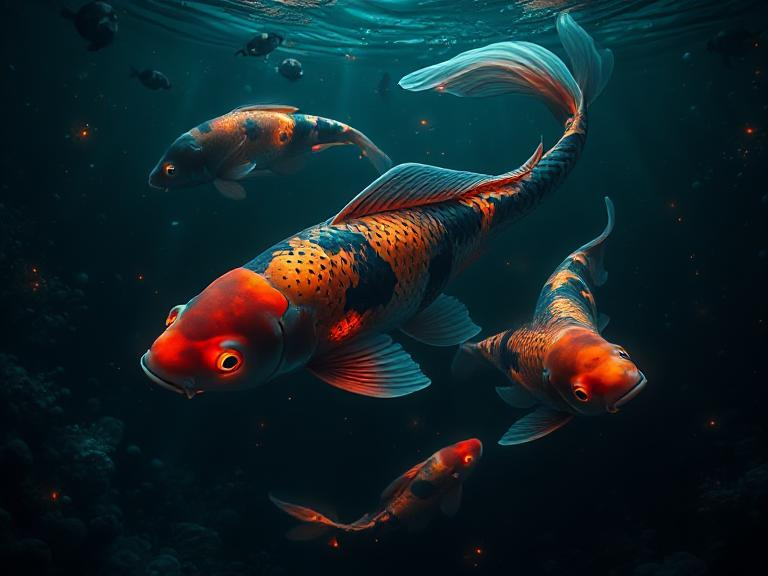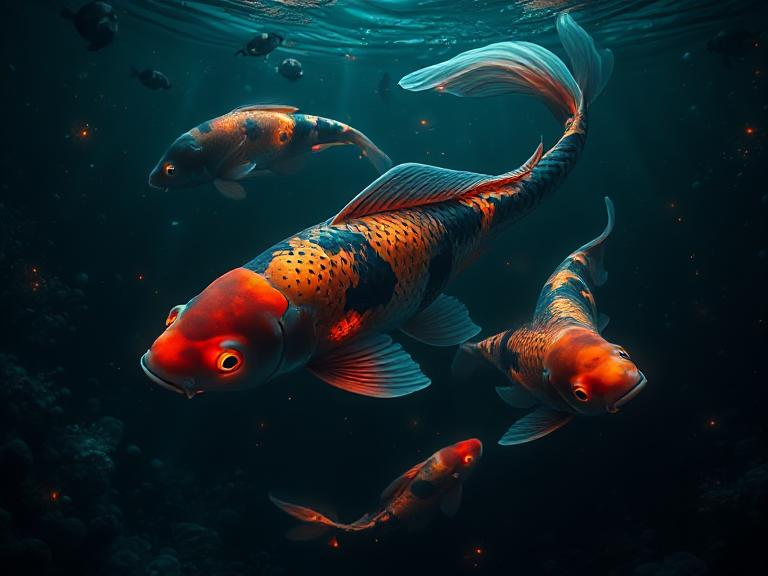
Koi fish, known for their vivid colors and graceful movements, have long captured the fascination of fish enthusiasts and pond owners around the world. With their origins in Japan, these ornamental fish are highly revered not only for their beauty but also for their symbolism and the care they require.
Origins of Koi Fish
The koi fish, also known as Nishikigoi, has its roots in ancient China, but it was in Japan that these fish were selectively bred for their striking colors and patterns. Initially, koi were bred for food, but over time, they were seen as ornamental fish due to their colorful appearance. Today, koi fish are considered a symbol of prosperity, good luck, and perseverance, especially in Japan, where they hold deep cultural and spiritual significance.
Symbolism and Cultural Importance
In Japanese culture, koi fish are often associated with strength and perseverance. This is derived from an ancient myth about a koi that swam upstream and transformed into a dragon after overcoming the waterfall, symbolizing transformation and success through determination. Koi are often displayed in decorative ponds and gardens, and their presence is thought to bring positive energy and fortune to the area.
Furthermore, koi are seen as symbols of longevity and tranquility. They are commonly kept in outdoor ponds and are known for their ability to live for many years, sometimes even decades, under the right conditions. Some koi can live to be over 50 years old, with a few extraordinary specimens reaching up to 200 years.
Koi Fish Care and Maintenance
Caring for koi fish requires knowledge and attention. These fish need a suitable environment with clean, well-oxygenated water, and they thrive in large ponds with plenty of space to swim. Temperature control is crucial as koi prefer water that is between 59 to 77 degrees Fahrenheit (15 to 25 degrees Celsius). They are sensitive to changes in water quality, and regular monitoring of water parameters, such as pH, ammonia, and nitrate levels, is essential to keep them healthy.
Koi also require a balanced diet that includes special koi pellets, vegetables, and occasionally, live food. The proper feeding regime ensures their vibrant coloration and overall well-being. Additionally, it’s important to ensure that their pond is protected from predators, such as birds and raccoons, which can pose a threat to these elegant creatures.
Conclusion
Koi fish are not just beautiful creatures; they embody qualities that many admire, such as strength, perseverance, and tranquility. Their rich history and cultural significance, combined with the challenges of caring for them, make koi keeping a rewarding and fulfilling hobby. For anyone willing to put in the effort, koi fish can transform a simple pond into a peaceful sanctuary that brings beauty and positive energy to any home.

